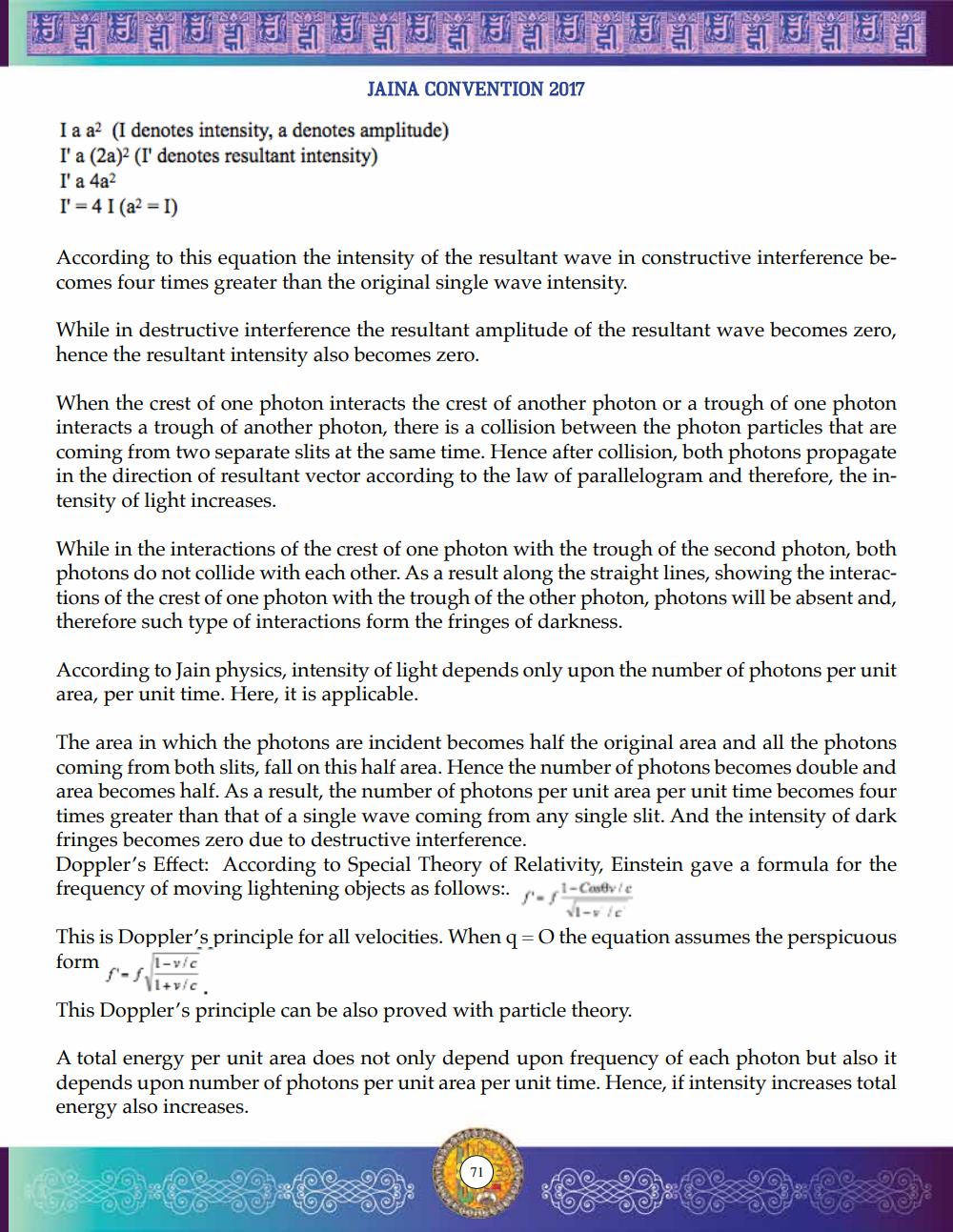________________
Ha Ha Ha Halalala lalalad da
JAINA CONVENTION 2017
I a a2 (I denotes intensity, a denotes amplitude)
I'a (2a)2 (I' denotes resultant intensity)
I' a 4a2
I' = 41(a2 = 1)
According to this equation the intensity of the resultant wave in constructive interference becomes four times greater than the original single wave intensity.
While in destructive interference the resultant amplitude of the resultant wave becomes zero, hence the resultant intensity also becomes zero.
When the crest of one photon interacts the crest of another photon or a trough of one photon interacts a trough of another photon, there is a collision between the photon particles that are coming from two separate slits at the same time. Hence after collision, both photons propagate in the direction of resultant vector according to the law of parallelogram and therefore, the intensity of light increases.
While in the interactions of the crest of one photon with the trough of the second photon, both photons do not collide with each other. As a result along the straight lines, showing the interactions of the crest of one photon with the trough of the other photon, photons will be absent and, therefore such type of interactions form the fringes of darkness.
According to Jain physics, intensity of light depends only upon the number of photons per unit area, per unit time. Here, it is applicable.
The area in which the photons are incident becomes half the original area and all the photons coming from both slits, fall on this half area. Hence the number of photons becomes double and area becomes half. As a result, the number of photons per unit area per unit time becomes four times greater than that of a single wave coming from any single slit. And the intensity of dark fringes becomes zero due to destructive interference.
Doppler's Effect: According to Special Theory of Relativity, Einstein gave a formula for the frequency of moving lightening objects as follows:.
f'-fl-Costivie √l-v/c
This is Doppler's principle for all velocities. When q = O the equation assumes the perspicuous 1-vic f-f√itvic.
form
This Doppler's principle can be also proved with particle theory.
A total energy per unit area does not only depend upon frequency of each photon but also it depends upon number of photons per unit area per unit time. Hence, if intensity increases total energy also increases.
71




